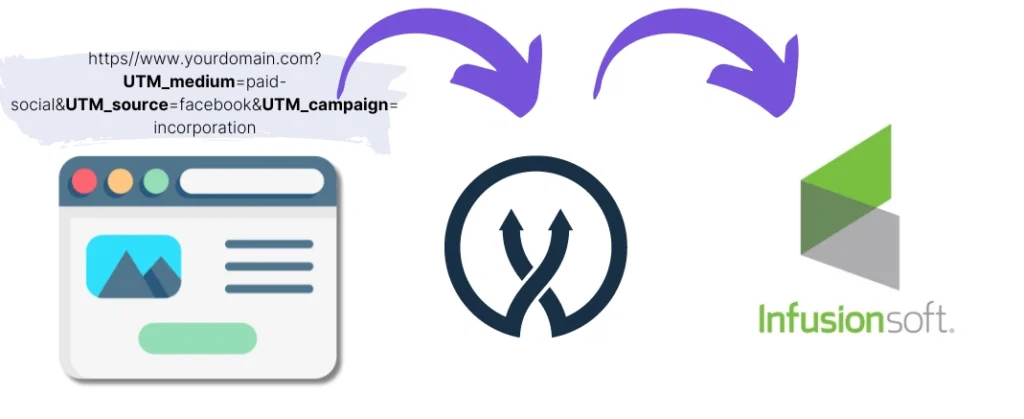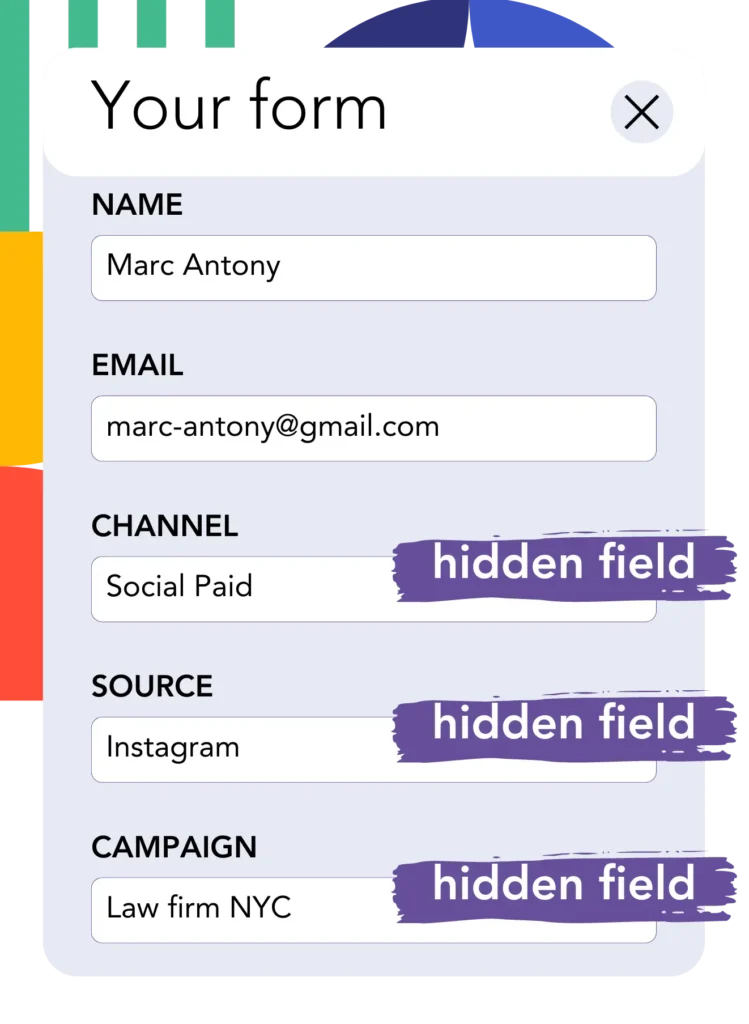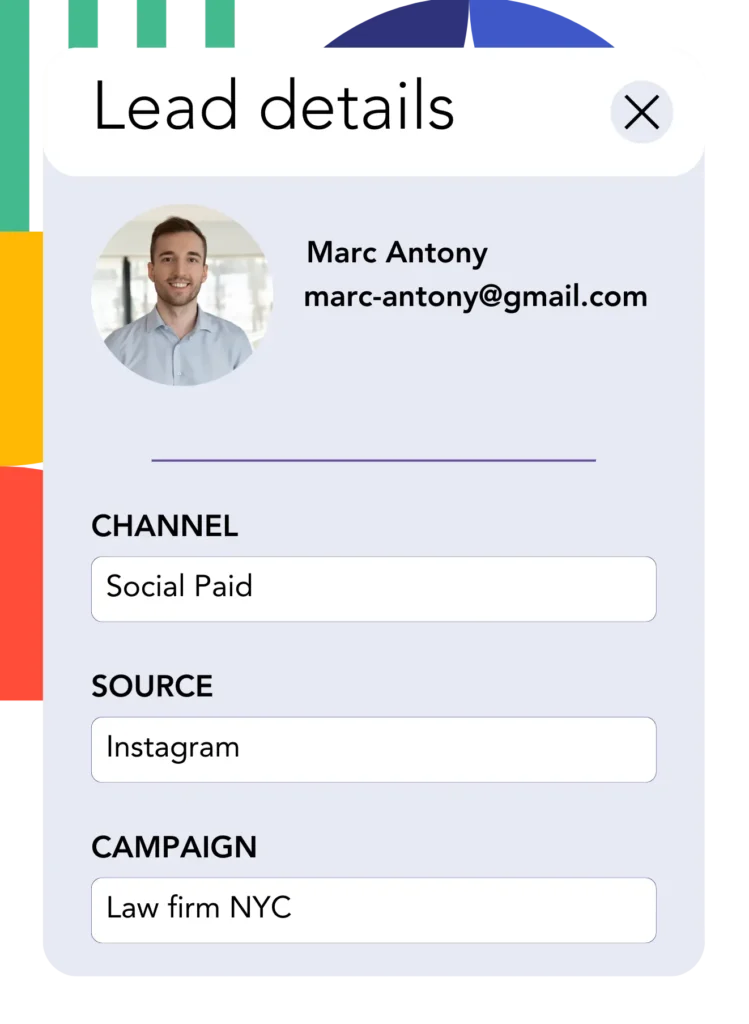For non-coders, integrating UTM parameters into Infusionsoft can be quite a challenge.
Imagine a solution that lets you easily add UTM parameters to Infusionsoft, all without any coding involved.
Discover Leadsources.io!
Leadsources is a lead source tracking tool that acts as a middleman between your UTM parameters and your CRM (in this case, Infusionsoft).

When a visitor interacts with your marketing campaign, Leadsources captures the UTM parameters from your URL.
Leadsources then automatically inserts these UTM parameters into the hidden fields of your form.
By linking your form to Infusionsoft, you can view your new leads along with their UTM parameters directly in Infusionsoft.
This allows you to generate performance reports to determine where your most profitable customers originate from.
In this guide, you’ll learn how to capture UTM parameters in Infusionsoft in just 10 minutes using Leadsources (no coding skills needed).
Capture UTM parameters into Infusionsoft in 4 easy steps
Step 1: Add Leadsources in the head tag of your website

Sign up to Leadsources.io, and benefit from our 14-day free trial.
Include the Leadsources code in the head tag of your website. Coding expertise is not required.
Simply follow the step-by-step guide we have created.
Step 2: Add the UTM parameters to your campaigns

Add the UTM parameters you want to monitor for every campaign type (PPC, email, social media, etc.).
Leadsources works with any of the following UTM parameters:
- UTM_source
- UTM_campaign
- UTM_term
- UTM_content
In addition to UTM parameters, Leadsources also tracks data such as the channel, landing page, and landing page subfolder.
Step 3: Add the hidden fields to your form

Leadsources automatically inserts UTM parameters (channel, source, etc.) into the hidden fields of your form as visitors enter their information (name, email, etc.).
Add hidden fields to your form to hold the UTM parameters. We’ve created an easy-to-follow guide for every major form builder.
Step 4: Track the UTM parameters into Infusionsoft

As soon as someone clicks your campaign link and lands on your site, Leadsources grabs the UTM parameters from the URL.
The UTM parameters are automatically added to the hidden fields of your form by Leadsources.
When the form is submitted, UTM parameters and the responses are forwarded to Infusionsoft. Ensure you link your form to Infusionsoft to facilitate this.
How does Leadsources work?
By inserting the Leadsources code into your website’s head tag, Leadsources captures UTM parameters from the URL each time a visitor lands on your site.
It then stores the UTM parameters in the hidden fields of your form.
Leadsources can capture visitor information using the referrer, even if they land on your site without clicking on a link with UTM parameters by:
- Channel
- Source
- Campaign
- Landing page
- Landing page subfolder
You can still capture key lead source data with this technique, even if UTM parameters are not available or desired, such as:
- On Google Search
- On your Instagram bio link
- On your social media posts
While many tools can only identify lead sources through UTM parameters, Leadsources enables tracking of lead sources no matter where they come from:
- Organic Search
- Paid Search
- Organic Social
- Paid Social
- Referral
- Affiliate
- Display Advertising
- Direct Traffic
This facilitates the collection of clean lead source data in a centralized location.
How to run performance reports
Now that you have captured your UTM parameters into Infusionsoft, you can use it to run performance reports such as:
- Leads per channel
- Revenue per channel
- Revenue per keyword
With this, you can make well-informed choices about how to allocate your marketing spend.
We’ll take a look at the various reports you can create.
Lead performance reports
You can run reports showing the volume of leads generated by:
- Channel
- Source
- Campaign
- Landing page
- Landing page subfolder
Example #1
For campaigns run on different platforms (SEO, PPC, email, etc.), you can export the data and create a report named “Leads by Channel”.

Example #2
Once you determine which channel brings in the highest number of leads (e.g., Google Ads), you can select this channel to break down the lead count for each individual ad campaign.

Example #3
After determining which campaign generates the most leads, you can further investigate by looking into the particular keywords responsible for these leads.

Sales performance report
While knowing which ads and keywords produce the highest number of leads is useful, does it imply that these ads and keywords boost your revenue?
By integrating your form submissions with Infusionsoft, you can generate comprehensive sales performance reports.
Example:
| Channels | Search Paid | Social Paid |
| Leads | 50 | 75 |
| Sales | 5 | 6 |
| Average order value | $150 | $100 |
| Revenue | $750 | $600 |
After running ads on Google and Facebook, you found that Social Paid ads yielded a higher number of leads compared to Search Paid ads.
After several weeks, analyzing lead conversions shows that the Search Paid channel generated higher revenue with fewer leads than the Social Paid channel, leading you to increase your Search Paid budget.

